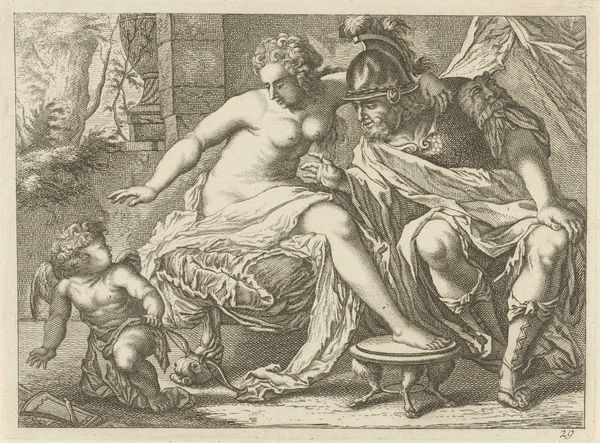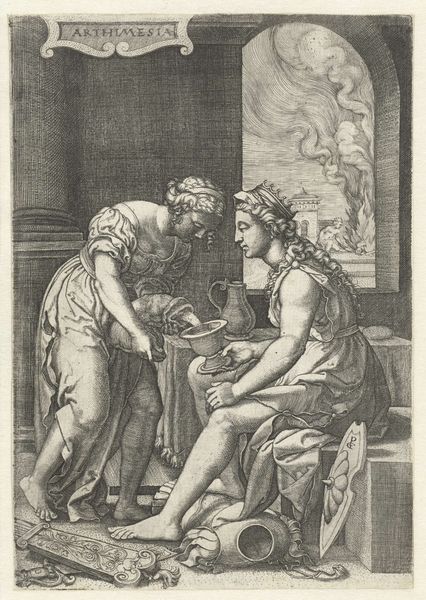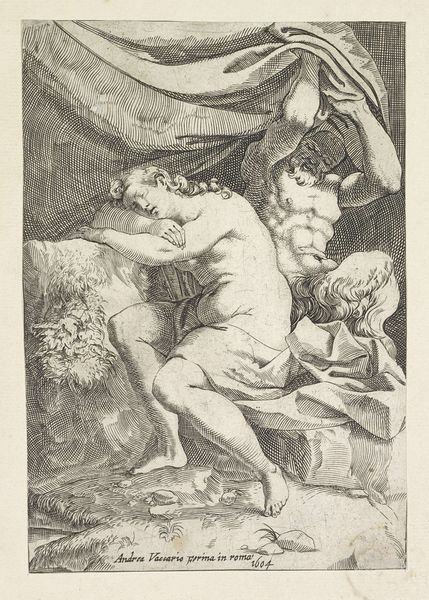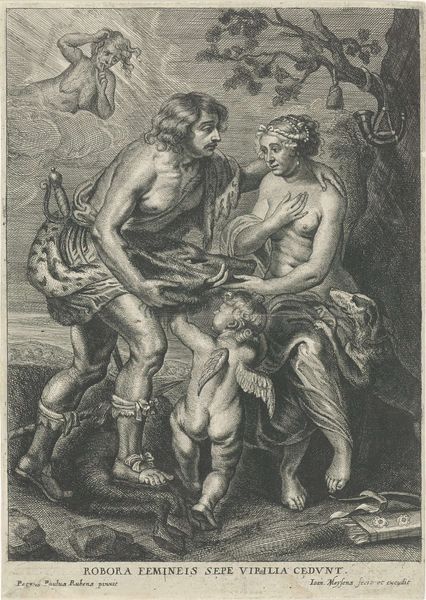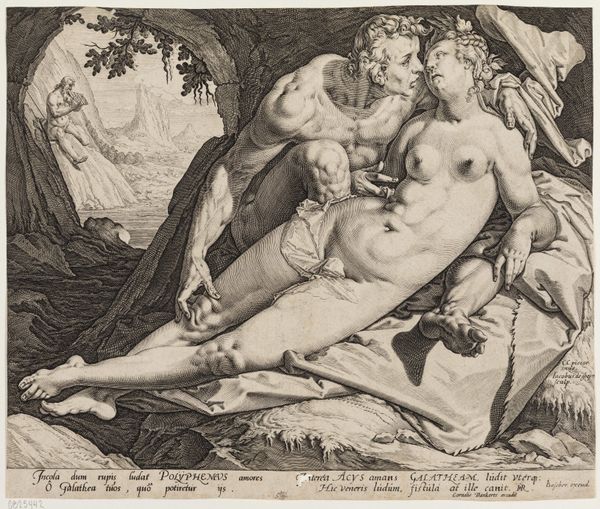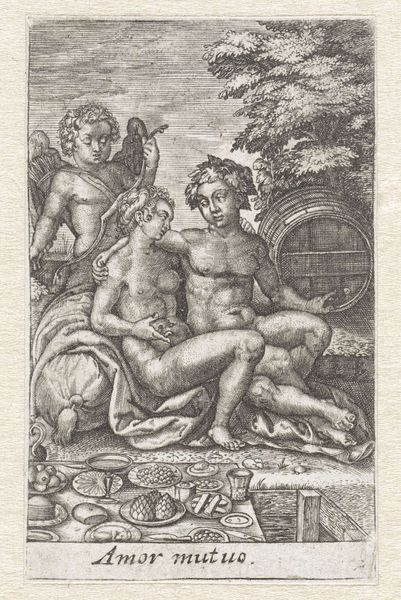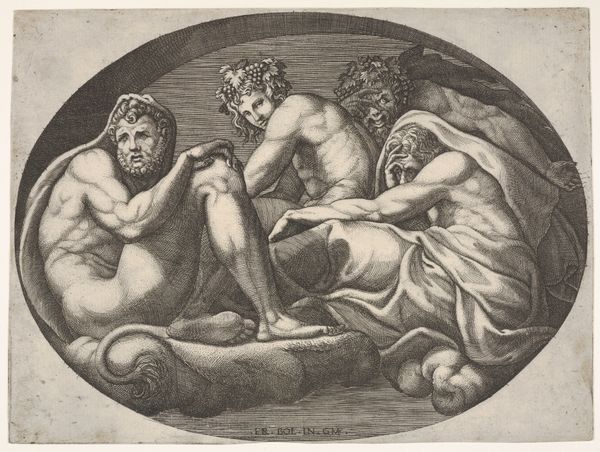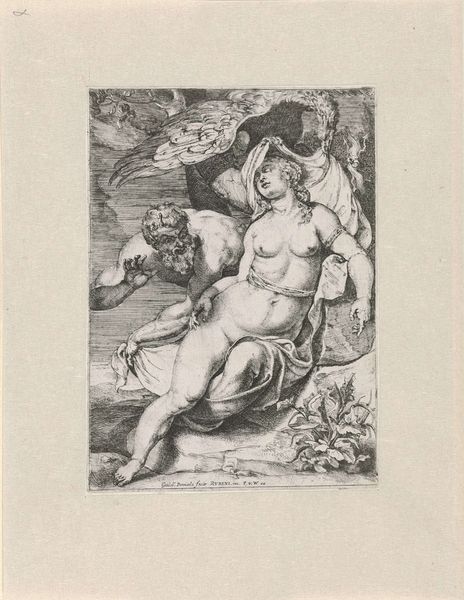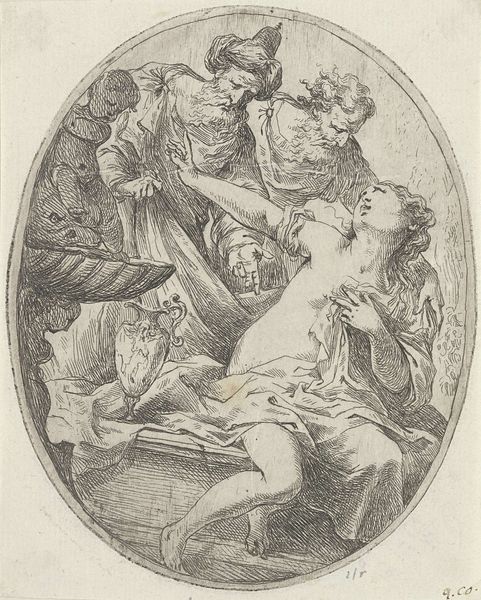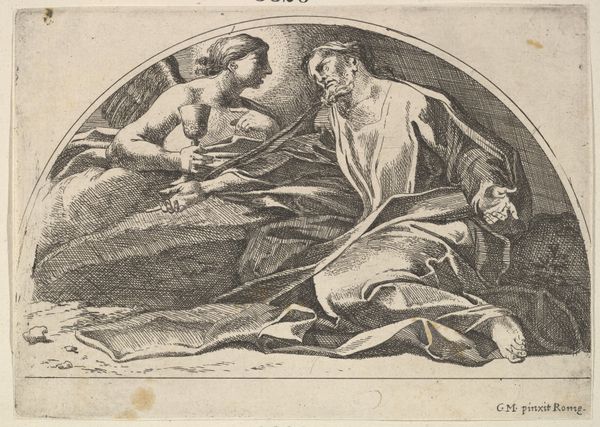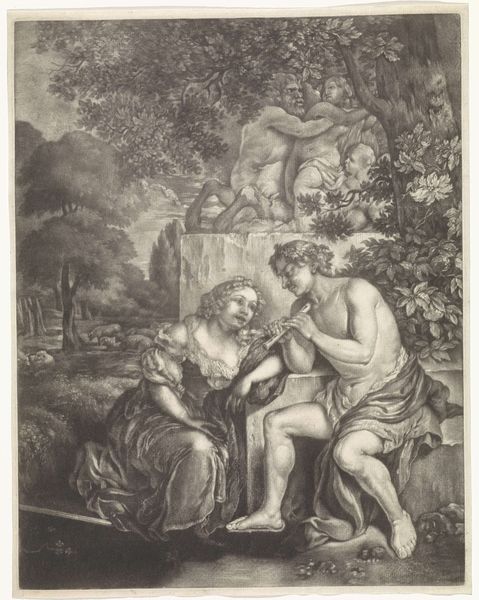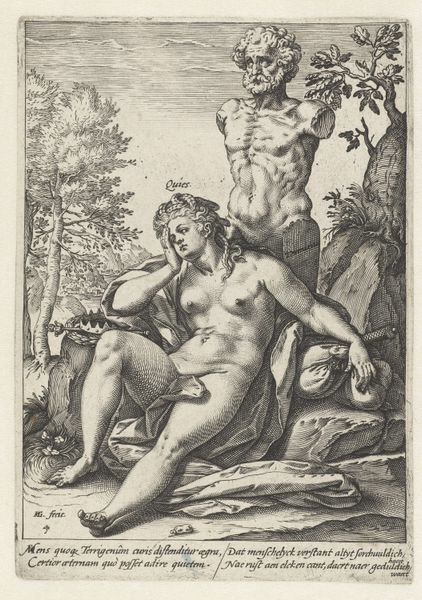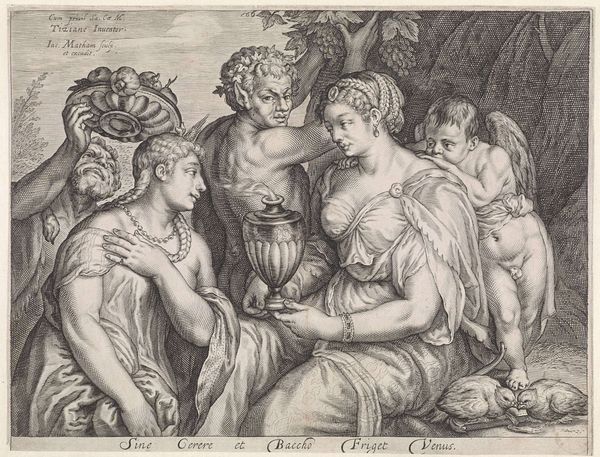
#
pencil drawn
#
light pencil work
#
pen sketch
#
pencil sketch
#
pencil drawing
#
pen-ink sketch
#
pen work
#
portrait drawing
#
pencil work
#
pencil art
Dimensions: height 150 mm, width 200 mm
Copyright: Rijks Museum: Open Domain
Curator: At first glance, there is a sense of languid repose here. The subjects are casually posed, as if interrupted mid-conversation or perhaps, after revelry. Editor: Yes, "Bacchus en Ariadne," likely crafted between 1700 and 1750, certainly conveys that air of relaxed drama. This drawing from the Rijksmuseum uses light pencil work to capture the scene. I find myself immediately drawn to the intimacy between the figures and the sense of vulnerability. The artist, though currently anonymous, manages to imbue the scene with palpable emotion. Curator: Considering that it is Bacchus, vulnerability is appropriate: wine could lead to some states of vulnerability. Bacchus, of course, traditionally symbolizing ecstasy and release, juxtaposed against Ariadne's figure who represents something different here, possibly the loss that can come from surrendering yourself to passion and chaos represented by him. It feels like a psychological moment is being rendered: The image might represent their cultural standing, their union suggesting the societal permission of excesses within aristocratic circles. Editor: It is intriguing to see that interplay visualized, as you point out. Their union, framed within what could be perceived as a staged environment, makes me consider how public image and personal narratives were carefully constructed during this time. Notice also how the anonymous artist chose pen and ink, a relatively accessible medium, allowing for wider dissemination and interpretation of classical stories and ideals. Do you agree? Curator: Yes. Furthermore, even in this "light" sketch work there is still a clear symbolic intent. Observe Ariadne's partially draped form – evoking both classical sculpture and hinting at hidden depths and untold stories about womanhood during that time. Her body language implies submissiveness, but what about the symbolism in the shadows where her thoughts are not fully clear? Is this the memory and continuity of how women should be seen in public during those times? The chalice might denote offering, as she is offering Bacchus all of her intentions for their relation. Editor: Such a deep read—I'm more convinced that the setting contributes much more than the intent: I had focused perhaps too narrowly on the figures themselves without giving full consideration to context of location in its ability to promote imagery. The drawing reminds us about artistic creation and perception within society. The very accessibility of pen and paper challenge conventions, thus this anonymity to challenge. This piece really makes me want to re-evaluate other artworks from this period. Curator: Indeed! I appreciate you offering insights that explore both the psychological intent behind using certain iconography as well as socio-political context! Both offer compelling ways to reflect.
Comments
No comments
Be the first to comment and join the conversation on the ultimate creative platform.
